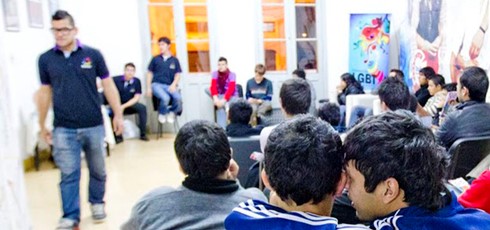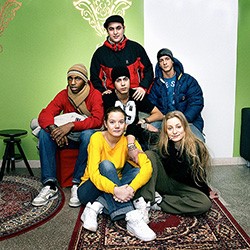Statistics: United States

- In 2019, nearly 1.2 million people in the United States were living with HIV, and approximately 13% of them did not know they were infected.
- For every 100 people with diagnosed HIV in the U.S. in 2019, 76 received some HIV care, 58 were retained in care, and 66 were virally suppressed.
- There were 36,801 new HIV diagnoses in 2019.
- In 2019, Southern states accounted for more than half of new HIV diagnoses in the U.S., despite making up just 38% of the overall U.S. population.
- African Americans accounted for 42% of HIV diagnoses in 2019, although they comprise only about 14% of the population.
- In 2019, there were 15,815 deaths among people with diagnosed HIV in the U.S. and dependent areas. These deaths may be due to any cause.

Gay and Bisexual Men
- Of the nearly 37,000 new HIV diagnoses in the U.S. and dependent areas in 2019, 69% were among gay and bisexual men.
- In 2019, an estimated 754,700 gay and bisexual men were living with HIV. About 13% of them were unaware of their status.
- African American gay and bisexual men account for the largest number of HIV diagnoses.
- From 2015 to 2019, HIV diagnoses decreased 9% among gay and bisexual men overall, and remained stable for African American and Latino gay and bisexual men.

HIV in Women
- Approximately 22% of people living with HIV in the U.S. are women. About one in ten are unaware of their status.
- Adult and adolescent women accounted for 19% of new HIV diagnoses in 2018. Of these, 85% were attributed to heterosexual sex and 15% to injection drug use.
- From 2014 to 2018, HIV diagnoses in women declined 7% overall. New HIV diagnoses declined 10% among African-American women and 9% among Latinas, and increased by 15% among white women. New HIV diagnoses declined among women of all ages except in those over 55; in that age group the rate of new diagnoses increased by 5%.
- Among all women diagnosed with HIV in 2018, 57% were African American, 21% were white, and 18% were Hispanic/Latina.
- For every 100 women diagnosed with HIV in 2018, 76 received some HIV care, 58 were retained in care, and 63 were virally suppressed.

HIV in Young People
- Youth aged 13 to 24 accounted for more than 1 in 5 new HIV diagnoses in 2018.
- Young men accounted for 87% of new HIV diagnoses among youth in 2018; young women for 13%. About 92% of young men acquired HIV through male-to-male sexual contact; about 85% of young women acquired HIV through heterosexual contact.
- Among people aged 13-24, an estimated 44% of those living with HIV at the end of 2016 didn’t know they were infected.
- Youth with HIV are the least likely of any age group to be linked to care in a timely manner and have a suppressed viral load. Only 30% of youth living with HIV in 2016 were virally suppressed.
Sources:
U.S. Centers for Disease Control and Prevention: Statistics Overview
U.S. Centers for Disease Control and Prevention: HIV in the United States: At a Glance
U.S. Centers for Disease Control and Prevention: HIV in the United States by Geography
U.S. Centers for Disease Control and Prevention: HIV Among Gay and Bisexual Men
U.S. Centers for Disease Control and Prevention: HIV Among Women
U.S. Centers for Disease Control and Prevention: HIV Among Hispanics/Latinos
U.S. Centers for Disease Control and Prevention: HIV Among African Americans
U.S. Centers for Disease Control and Prevention: HIV Among Youth
U.S. Census Bureau United States Population Growth by Region
(Last updated November 2021)